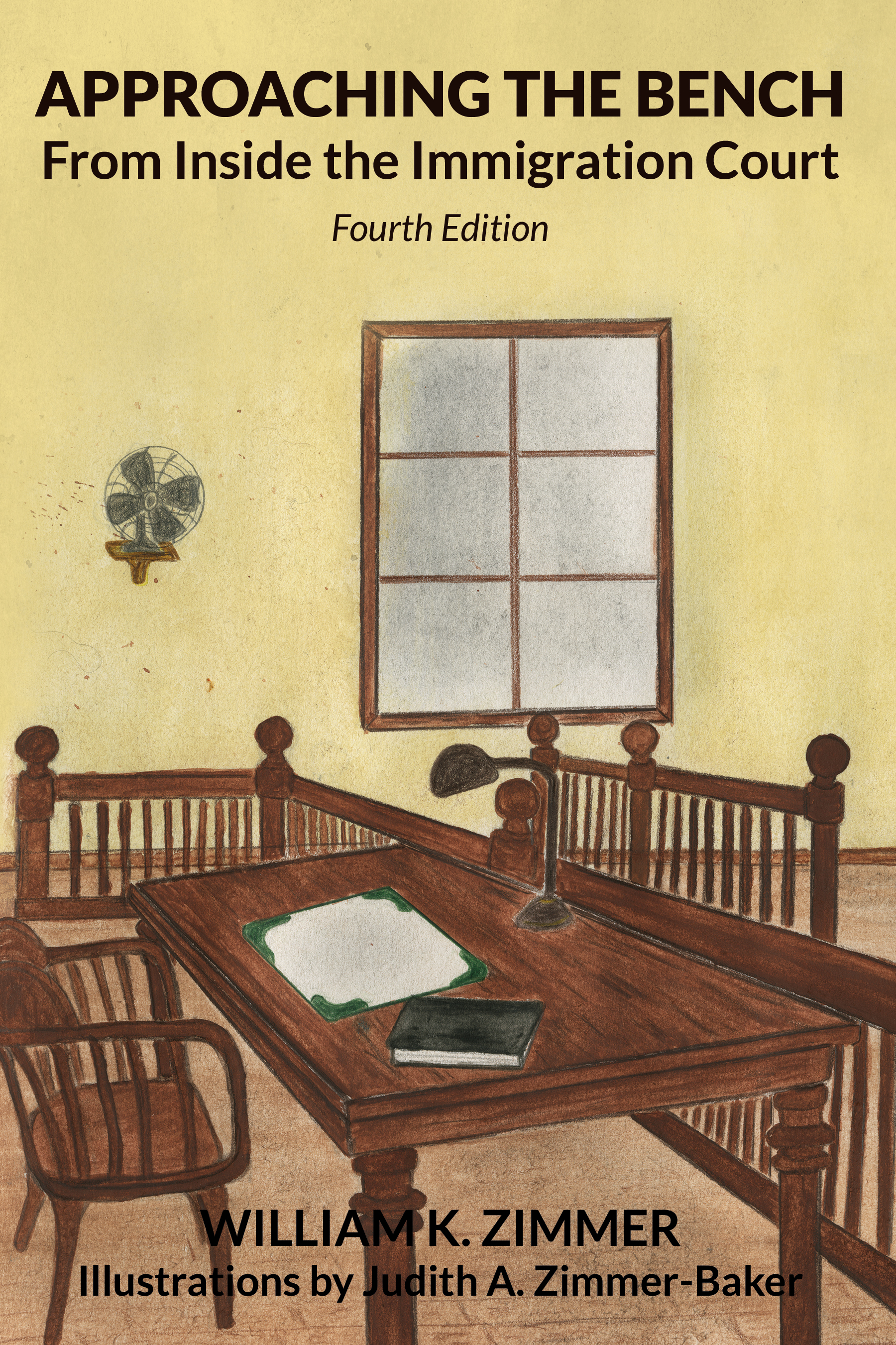Establishing Amount of Loss Pursuant to Section 101(a)(43)(M)(i) of The Act

The procedural history, facts of record, holding and rationale in Francis Osei Fosu, also known as Francis Pino Fosu v. Garland (June 7, 2022) No. 20-60749 are as follows:
Case History
In 2019, the Department of Homeland Security ("DHS") served the Petitioner with a notice to appear.
The Immigration Judge determined that the Petitioner was subject to removal as charged.
The Petitioner applied for withholding of removal and protection under the Convention Against Torture.
The Immigration Judge denied the Petitioner’s relief applications and ordered him removed from the United States.
The Petitioner then appealed to the Board of Immigration Appeals (“BIA”).
The BIA dismissed the Petitioner’s appeal.
The Petitioner filed a petition for review of the BIA’s decision.
Facts
- The Petitioner is a native and citizen of Ghana who was admitted to the United States in 2007 as a lawful permanent resident.
- In 2018, the Petitioner was convicted of conspiracy to commit bank and wire fraud in violation of 18 U.S.C. § 1349.
- The United States District Court sentenced the Petitioner to one year and one day of imprisonment and ordered him to pay $229,717.30 in restitution.
- The Petitioner’s co-conspirators were ordered to pay approximately $229,000 each to account for the nearly $1.4 million that was stolen.
- An Immigration Judge sustained an aggravated felony removal charge against the Petitioner under section 237(a)(2)(A)(iii) of the Immigration and Nationality Act, as amended (“the Act”) based on the definition of aggravated felony under sections 101(a)(43)(M) and (U) of the Act.
- Specifically, the Immigration Judge determined that the Petitioner had been convicted of “an offense that involves fraud or deceit in which the loss to the victim or victims exceeds $10,000,” and “an attempt or conspiracy to commit an offense described in section 101(a)(43)(M) of the Act.”
- After sustaining the removal charge, the Immigration Judge denied the Petitioner’s applications for withholding of removal under section 241(b)(3) of the Act and withholding of removal under the Convention Against Torture and other Forms of Cruel, Inhuman or Degrading Treatment or Punishment (a treaty signed by the United States on October 18, 1988 and ratified by the United States Senate on October 27, 1990) (“CAT”).
- On July 14, 2020, the BIA issued its dismissal of the Petitioner’s appeal and removal order, and mailed it to the Petitioner.
- The Petitioner’s petition for review contains a certificate of service with a date of August 10, 2020, and the postmark date on his envelope is August 11, 2020.
- However, the clerk’s office received his petition on August 14, 2020, 31 days after the BIA mailed its order to him.
Held
Petition for Review DENIED in part and DISMISSED in part
Rationale
The Petitioner’s challenges to his removal order can be consolidated into three assertions:
- The Immigration Judge and the BIA relied on $229,717.30 contained in an order of restitution which is not linked to his conviction to determine whether the loss to victims exceeded $10,000 pursuant to section 101(a)(43)(M) of the Act.
- The BIA erred by rejecting his ineffective assistance of counsel claim against his immigration attorney as a basis to continue his removal proceedings.
- The BIA erred in its decision regarding his claims for withholding of removal and protection under CAT, and that various subsections of section 101(a)(43) of the Act are unconstitutional.
The Fifth Circuit Court of Appeal reasoned as follows:
Restitution Order
- The amount of loss under section 101(a)(43)(M)(i) of the Act “is a factual matter to be determined from the record of conviction.” Arguelles-Olivares v. Mukasey, 526 F.3d 171, at 177 (5th Cir. 2008).
- In addition, the amount of loss must be tied to the specific count of the conviction. Nijhawan v. Holder, 557 U.S. 29, at 42 (2009).
- Finally, when determining the losses of victims, the Immigration Judge can rely on sentencing-related material, including a restitution order. See Nijhawan v. Holder, at 42-43.
- The Petitioner’s order of restitution for $229,717.30 which reflects the amount owed within the judgment for his fraud conspiracy conviction provides clear and convincing evidence of losses exceeding $10,000 to his victims.
- Therefore, the BIA did not err by denying the Petitioner’s appeal challenging the determination that he is subject to removal pursuant to section 237(a)(2)(A)(iii) of the Act.
Ineffective Assistance of Counsel
- “[A]n alien’s failure to exhaust an issue before the BIA is a jurisdictional bar to this court’s consideration of the issue.” Avelar-Oliva v. Barr, 954 F.3d 757, at 766 (5th Cir. 2020).
- An alien fails to exhaust an issue if he does not first raise it before the BIA on direct appeal or in a motion to reopen. Omari v. Holder, 562 F.3d 314, at 318 (5th Cir. 2009).
- The Petitioner testified before the Immigration Judge about his ineffective assistance claim against his criminal defense attorney in his underlying criminal case, but he failed to raise his ineffective assistance claim against his immigration attorney on appeal or in a motion to reopen before the BIA.
- Consequently, the Fifth Circuit Court of Appeal lacks jurisdiction to consider the Petitioner’s ineffective assistance of counsel claim which he had directed against his immigration attorney.
Claims Relating to Relief and Constitutionality of Section 101(a)(43) of the Act
- A pro se (i.e. legalese literally meaning “for self” indicating a person who is not represented by an attorney or advocate) litigant’s claims are construed liberally. A pro se litigant, however, “must still brief the issues and reasonably comply with” Rule 28 of the Federal Rules of Appellate Procedure. Rui Yang v. Holder, 664 F.3d 580, at 589 (5th Cir. 2011).
- The Petitioner’s challenge to the BIA decision regarding his claims for withholding of removal and protection under CAT and the constitutionality of various subsections of section 101(a)(43) of the Act are unreasoned and unsupported by citation to the record or relevant authorities.
- Therefore, the Petitioner has abandoned these claims.
Commentary
It appears that the Fifth Circuit Court of Appeal, in Francis Osei Fosu v. Garland (June 7, 2022) No. 20-60749, applies at least one concept derived from a United States Supreme Court decision that is worthy of note when classifying aggravated felony offenses pursuant to section 101(a)(43)(M)(i) of the Act (i.e. an offense that involves fraud or deceit in which the loss to the victim or victims exceeds $10,000).
Specifically, a unanimous United States Supreme Court concluded that:
Congress did not intend subparagraph (M)(i)'s monetary threshold to be applied categorically, i.e., to only those fraud and deceit crimes generically defined to include that threshold. Rather, the monetary threshold applies to the specific circumstances surrounding an offender's commission of a fraud and deceit crime on a specific occasion.
Nijhawan v. Holder, 557 U.S. 29, at 42 (2009).
In other words, Nijhawan v. Holder departs from the categorical approach with regard to section 101(a)(43)(M) of the Act and permits an independent factual determination about monetary loss exceeding $10,000, even though the loss must be connected to the offense under consideration.
The categorical approach describes a direct comparison of the statutory definition of an offense to the statutory elements of the generic federal offense or federal offense referenced in the aggravated felony definition. If all of the elements of the offense under consideration match each of the elements in the generic federal offense or federal offense referenced in the aggravated felony definition there is no need for further inquiry. The offense under consideration must be an aggravated felony according to basic inductive logic. Taylor v. United States, 495 U.S. 575 (1990) (“The sentencing court must generally adopt a formal categorical approach . . . looking only to the fact of conviction and the statutory definition of the predicate offense, rather than to the particular underlying facts.”).
Taylor v. United States involved the application of sentencing guidelines in United States District Court. It serves, however, as guidance for application of the categorical approach in immigration proceedings. The United States Supreme Court further reiterated that, under the categorical approach, courts “focus solely on whether the elements of the crime of conviction sufficiently match the elements of [the] generic [crime], while ignoring the particular facts of the case.” Mathis v. United States, 136 S. Ct. 2243, at 2248 (2016).
There is much more to explain with regard to the classification of offenses as aggravated felonies pursuant to section 101(a)(43) of the Act, such as determining when a modified categorical approach to aggravated felony classification is appropriate.
Before resorting to a modified categorical approach, a distinction must be made between elements of an offense (which must be proven beyond a reasonable doubt) and the means of committing the offense (for which proof is not necessary to obtain a conviction, but might appear in the criminal statute). Quoting Mathis, the BIA acknowledged that “the divisibility of a State statute depends on whether State law establishes that statutory alternatives are discrete ‘elements’ or alternative ‘means’ of committing an offense. Mathis v. United States, 136 S. Ct. at 2256.” Matter of Chairez-Castrejon, 27 I&N Dec. 21 (BIA 2017). The determination of whether parts of a State statute are “elements” or “means” typically involves a review of case law in the State where the conviction occurred.
In short, an “element” of an offense must be proven beyond a reasonable doubt to obtain a conviction. Whereas, the “means” of committing an offense is the way in which an offense is committed that need not be proven to obtain a conviction.
Once an offense under consideration for aggravated felony classification is deemed divisible according to its elements, lawyers and judges can resort to the modified categorical approach. This opens the door to review of indictments, jury instructions, plea colloquies, and plea agreements.
It seems that my narrative has strayed beyond the scope of Francis Osei Fosu v. Garland.
Although much more remains to be said about aggravated felony classification, concern for the reader’s patience counsels return to remaining observations relating to Francis Osei Fosu v. Garland.
Those who might represent detained clients should keep in mind that the Fifth Circuit Court of Appeal appears to withhold application of the prison mailbox rule in the case of detained individuals who are represented by counsel. Francis Osei Fosu v. Garland, at p.4; Navarro-Miranda v. Ashcroft, 330 F.3d 672 (5th Cir. 2003).
The Fifth Circuit Court of Appeal noted in Francis Osei Fosu v. Garland, however, that:
Whether Navarro-Miranda’s distinction between pro se detainees and detainees represented by counsel is textually supported is dubious at best, though it is not before us and is not a matter that we, as a panel, can resolve. See Chavarria-Reyes, 845 F.3d at 278 (“[R]epresented prisoners, no less than those proceeding on their own, can use the prison mailbox rule, whose text does not draw a distinction between represented and pro se litigants.” (emphasis omitted)).
Francis Osei Fosu v. Garland, at p.5, n.1. Chavarria-Reyes is a decision by the Seventh Circuit Court of Appeal. Chavarria-Reyes v. Lynch, 845 F.3d 275 (7th Circ. 2016).
In short, even though the Fifth Circuit Court of Appeal acknowledges that textual support in the rules of appellate procedure for distinguishing between pro se and represented detainees is “dubious,” a clear possibility exists that it will dismiss an untimely petition for review filed on behalf of a detained individual who is represented by counsel for lack of jurisdiction.
Finally, practitioners should keep in mind that the 30-day filing deadline under Federal Rule of Appellate Procedure 25(a)(2)(A)(iii) is jurisdictional and is not subject to to equitable tolling. Stone v. INS, 514 U.S. 386, at 405 (1995).
Procrastinators beware.

